Cover Letter Basics
Who will read it?
Cover letters are read by HR professionals involved in the hiring process, such as recruiters and hiring managers .
What is a cover letter?
A cover letter is an introductory message that typically accompanies a resume or application and provides more details about your skills and experience. It’s intended to provide examples of why you’re qualified for the specific role you’re applying for and the company you’re applying to. In other words, it’s a chance to differentiate yourself from other candidates and get the attention of HR professionals or the hiring manager.
Where to find more information?
There are a lot of resources available online to learn more about cover letter writing. There are services that provide format templates, content writing guidelines, spelling and grammar checking, programs for reading text aloud, and other services. Often, websites that host job applications also have resources on how to successfully apply and interview for their positions. For example, both Indeed and LinkedIn offer career advice to job seekers.
When should a cover letter be written?
Because so many employers utilize resume-filtering software, cover letters should be written and submitted along with every possible application. Whether they’re submitted along with your resume in the application, or incorporated into an email, this introductory message should include key phrases you’ve identified from the job description that match your experience and skills. Cover letters can also be utilized to address any gaps in employment.
Why are they important?
A cover letter is not only an opportunity to sell your transferable skills, but also a chance to explain what your goals are. Because of the pandemic, many career professionals are pivoting, rethinking their skillsets, and applying their strengths to new industries. If you’re experiencing a similar adjustment, your cover letter can not only help explain this shift but also emphasize your professional value. And in lieu of having a direct connection, a strongly written cover letter is your best chance for your application to be seen by a recruiter or other HR professional.
How to write one?
1. Research
Before you submit your application, be sure to thoroughly research the company you’re applying to. Review their website, social media networks, press releases or other news stories, their blog and resources, and any other relevant public information. Be able to speak to why you’re applying to this company specifically and how your experience can directly contribute to their success.
2. Format
To format your cover letter, create a heading that includes your name, contact information, and the employer’s contact information, if available. Divide your cover letter into multiple paragraphs, rather than one large body of text, to make it easier to read and leave space between the heading, intro paragraph, body paragraphs, closing paragraph, and signature. Your cover letter should be single spaced, left justified, and in a simple, 10-point font.
Try to stick to one page — a good cover letter doesn’t need to be lengthy to be successful. Remember to use a print preview setting to ensure it will send or print as one page.
3. Basics
Divide your cover letter into 3 or 4 short paragraphs. In the first paragraph, identify the role you’re applying for and how you found out about the opportunity. Highlight your top qualifications, current position, and years of experience.
In the second (and possibly third) paragraphs, discuss how your specific skills and experience qualify you for the position. Try to avoid simply restating what’s in your resume, but instead, provide a high level analysis of how your previous work experience has qualified you for this role. To strengthen your writing and help you stand out from other candidates, review the mission statement and values of the company you’re applying to and connect your experiences and skills with their goals and values.
Finally, in the last paragraph, restate your excitement for the role and include a sign off, your name, and any contact details you wish to provide.
4. Final steps
Be sure to carefully review your cover letter for any potential spelling errors. Then do an additional review for grammar; you can use a free grammar checking service to refine your tone, sentence structure, and clarity in word choice. After you’ve proofread and spell checked your cover letter, take a few minutes to review the flow by reading it out loud, using an online text reading service or asking some else to read and provide feedback.





